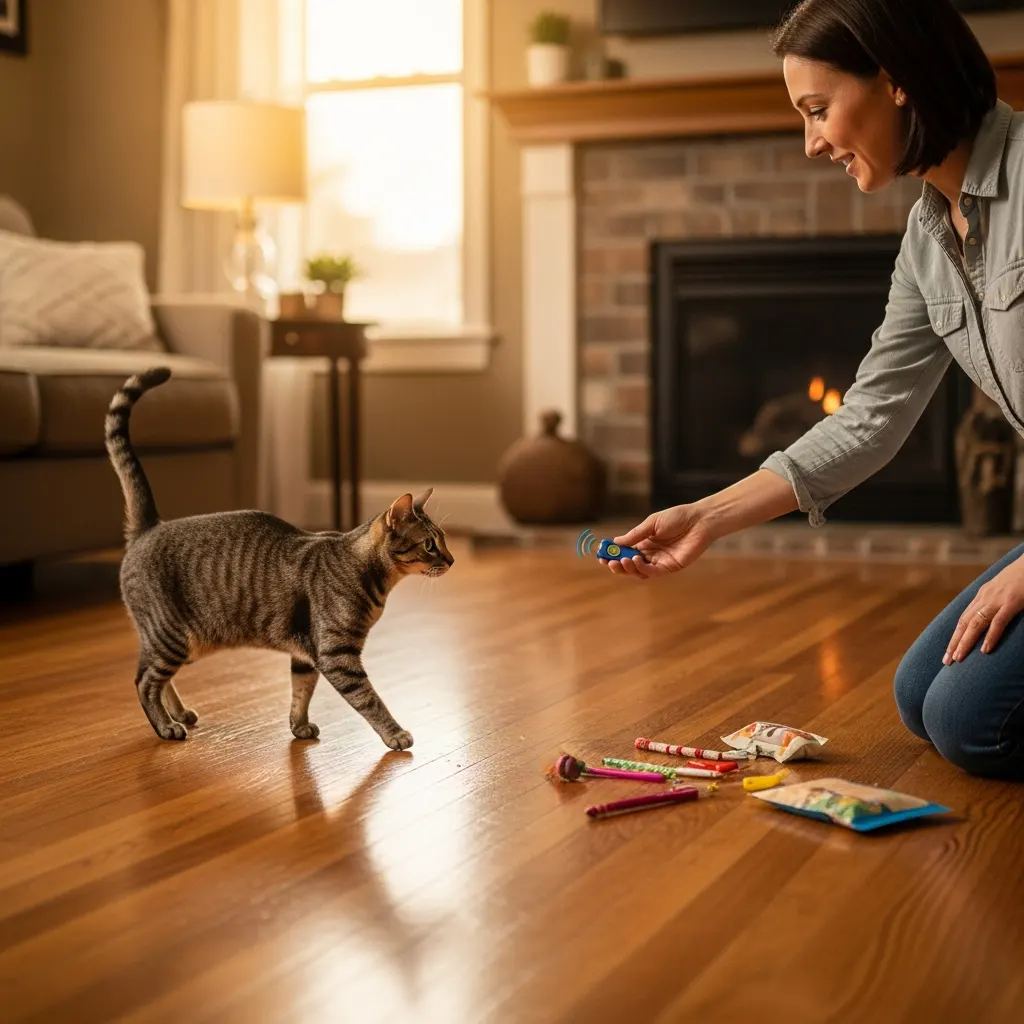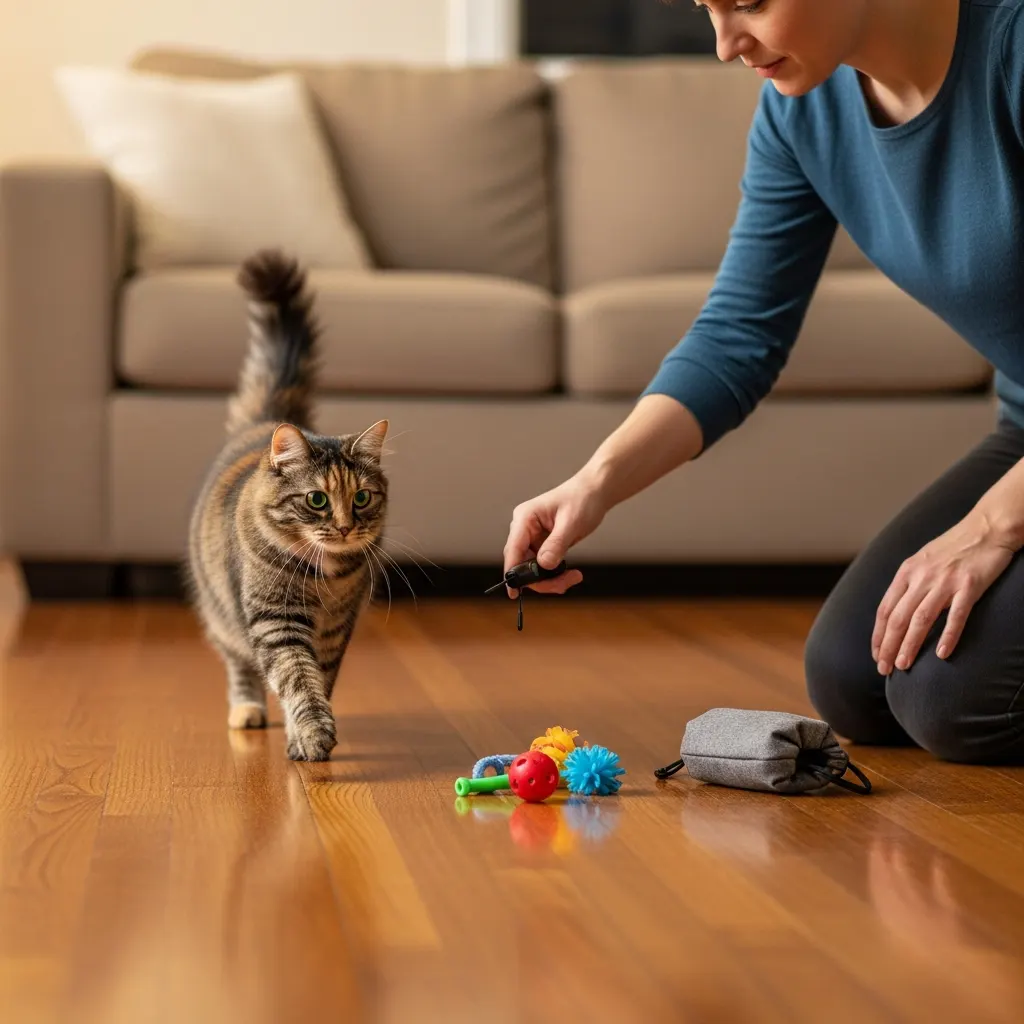Why Teaching Your Cat to Come When Called Matters
Teaching your cat to come when called isn’t just a neat party trick—it can be a lifesaver. Imagine the peace of mind knowing your adventurous feline will return at the sound of your voice if they slip out the door or wander too far during supervised outdoor time. This essential skill protects them from hazards like busy streets, predatory animals, or getting lost in unfamiliar territory. Rather than chasing after your pet in a panic, you’ll have a reliable way to ensure their safety and bring them back home swiftly.
Beyond safety, recall training strengthens the bond between you and your cat. When your cat rushes to you at mealtime or playtime on command, it fosters mutual trust and improves communication. This positive interaction becomes a routine highlight—your cat learns that coming when called leads to treats, affection, or a favorite toy. By understanding how to train your cat to come when called, you transform everyday moments into opportunities for reinforcement and joy, deepening your companionship.
Finally, recall skills make vet visits, medication routines, and grooming sessions less stressful. Calling your cat into a carrier or specific room becomes a calm, predictable cue rather than a stressful ordeal. When you know how to train a cat to come when called, you ease daily caregiving tasks, reducing anxiety for both of you. With consistent practice, recall becomes second nature for your cat, making your life together smoother and more harmonious.

Understanding How Cats Learn and Respond
Cats learn best through positive reinforcement and repetition. Unlike dogs, who often respond to hierarchical cues, cats are motivated by rewards and curiosity. To grasp how to teach a cat to come when called, recognize that your pet’s attention span is shorter—training sessions should be brief, engaging, and always end on a high note. Consistency in tone, timing, and reward type helps your cat link the sound of their name with the pleasant outcome of treats or affection.
Feline learning hinges on clear cues. Using a distinct, calm command like “Here, kitty!” or your cat’s name in the same tone each time prevents confusion. Cats also pick up on body language and context, so practice in distraction-free environments before moving to busier areas of your home or yard. By mastering how to train your cat to come when called indoors first, you set a solid foundation for reliable responses in varied settings.
Finally, be patient with slow learners. Some cats need more repetitions to connect the cue with action. Avoid frustration or punishment—negative experiences break the trust essential for successful training. If your cat doesn’t respond immediately, reset expectations: shorten the distance, simplify the environment, or switch to a higher-value treat. With empathy and persistence, even the most independent feline can learn to come when called.

Preparing Your Training Tools and Environment
Before you begin, gather a few essentials: high-value treats (like small pieces of cooked chicken or freeze-dried fish), a clicker or consistent marker word (“Yes!”), and a quiet room free of other pets or loud noises. Having a pouch or container to hold treats keeps rewards handy and prevents interruptions when you call your cat. With these tools at your side, you’ll be ready to reinforce correct behavior the instant it happens.
Choose a secluded training spot, such as a bathroom or cozy corner, to minimize distractions. Close doors and windows so your cat can focus solely on you. If you plan to expand training outdoors later, ensure the harness or leash is ready for supervised sessions. Early sessions should last no more than three to five minutes—cats thrive on short, focused bursts of activity, and ending before they lose interest preserves enthusiasm for the next session.
Finally, pick a distinct recall cue. Whether it’s your cat’s name or a playful whistle, keeping the cue consistent is crucial. Write it down if necessary to avoid accidental variations. By preparing both tools and setting, you create an environment that supports learning and reduces frustration. With everything in place, you’re ready to dive into the step-by-step process of teaching your cat to come when called.
Step-by-Step Recall Training: From Name Recognition to Reliable Response
- Name Recognition: Start by capturing your cat’s attention with their name alone. In your training spot, say your cat’s name in a cheerful, upbeat tone. The instant they look at you, click or say “Yes!” and offer a treat. Repeat this 10–15 times per session, two to three times a day, until your cat reliably looks at you upon hearing their name.
- Short Distance Recall: Once name recognition is solid, take a step back. Call your cat’s name followed by your chosen cue (“Kitty, come!”). When they move toward you, reward immediately with the click and treat. If they don’t respond, shorten the distance until success. Gradually increase distance only after your cat consistently comes from three or four feet away.
- Randomized Practice: Mix up sessions throughout your home—call from behind a door, another room, or while your cat is lounging. Always reward correct responses instantly. If distractions cause failures, return to a simpler setting. Over time, your cat will generalize the cue, responding regardless of location or activity. This thorough practice helps ingrain reliable recall.
Continue these steps daily. Celebrate small wins and keep sessions upbeat. If your cat hesitates, pause training and revisit name recognition. By patiently progressing through name recognition, short-distance recalls, and varied practice, you will master how to train a cat to come when called in any situation.

Troubleshooting Common Challenges in Recall Training
If your cat ignores the call, reassess treat value first: switch to a more enticing reward like tuna flakes or a favorite toy. Sometimes cats outgrow simple treats, so upgrading incentive can reignite interest. Keep sessions short; if your cat seems bored or distracted, end on a positive note and try again later.
Distractions are another hurdle. If your cat fixates on a window bird or another pet, train in a different room or at a quieter time. Slowly introduce low-level distractions—such as a radio playing softly—before tackling more stimulating environments. This graduated exposure helps your cat focus on the recall cue amid real-world stimuli.
Lastly, avoid overcalling. Only use the recall cue for training or genuinely rewarding experiences. If you repeatedly call without follow-through—like no treat or attention—your cat may learn to ignore it. Reserve your command for practice and rewarding moments, maintaining its importance. With mindful troubleshooting, you’ll overcome obstacles and reinforce reliable recall.
Reinforcing and Maintaining Your Cat’s Recall Skills
Consistency is key to lasting success. Even after your cat reliably comes when called, continue brief recall sessions two to three times weekly. This refresher prevents regression and keeps the behavior strong. Randomly rewarding the behavior—sometimes with treats, other times with play—maintains excitement around the cue.
Vary your rewards over time. Alternate high-value treats, a quick brushing session, or a favorite feather toy. The unpredictability of the reward increases motivation and prevents habituation. Use your recall cue as a fun game—call your cat during playtime or mealtime to reinforce that coming when called always leads to something positive.
Finally, integrate recall into daily life. Call your cat for dinner, medication, or simply to your lap for cuddles. Celebrate each successful response with genuine enthusiasm—your tone and body language communicate as much as treats do. By weaving recall training into your routine, you’ll ensure that your cat comes when called reliably and joyfully, enhancing both safety and your special bond.




